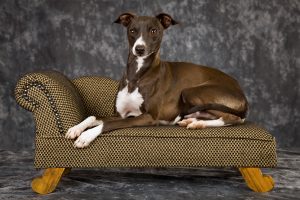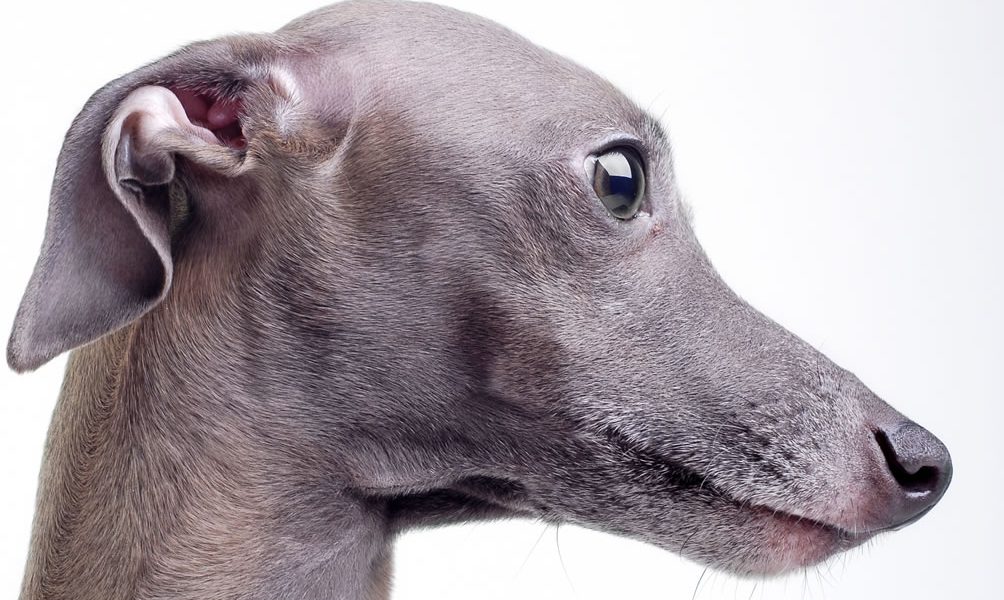 Italian Greyhounds are an ancient breed, dating back over 5,000 years. Evidence of their remains has been found in Egyptian tombs and drawings of the breed were found in the ruins of Pompeii. These dogs were mostly used as companions, but some have been used for rodent catching and falcon hunting.
Italian Greyhounds are an ancient breed, dating back over 5,000 years. Evidence of their remains has been found in Egyptian tombs and drawings of the breed were found in the ruins of Pompeii. These dogs were mostly used as companions, but some have been used for rodent catching and falcon hunting.
By the Middle Ages, the Italian Greyhound had spread across Europe. They were prized in Italy in the 1600’s, leading to their name. Nobility across the globe had a fondness for these little dogs. Frederick the Great of Prussia had one he loved so much he was buried beside him. An African chieftain once offered 200 cattle in exchange for just one of these dogs. Their popularity led designer breeders to try to make even smaller versions, but this just led to some awful mutations. The breed had almost died out by the time a group of reputable breeders took it upon themselves to recreate the breed. Today they are popular around the world.
If you know what a Greyhound looks like, then you have a pretty good idea of what to expect from your Italian Greyhound. The biggest difference between the two breeds is size – an Italian Greyhound stands between 33 and 38 centimetres and weighs between 3.6 and 8.2 kilograms. Their chests are deep, stomachs tucked in and their legs are long. If you’ve ever had to chase one of these dogs, you’ll know that they’re perfectly designed for running.
Their coats are short and glossy and can come in a variety of colours. The preferred combinations are white with colour markings or coloured with white markings. It is possible for an Italian Greyhound to have a flecked coat, but these dogs are not allowed in shows. This breed is extremely easy to groom – just rub them down with a towel every once in a while and give them a bath if they get messy.
Above all else, the Italian Greyhound is a companion. They are very affectionate and kind to their owners. They have a tendency to like warm places, so they love to climb up on laps and snuggle up in bed. This means they aren’t too keen on going outside on cold or snowy days, so training them to do their business in a box might not be a bad idea. While they are an intelligent breed, they do not necessarily train very easily. Reward based training tends to work best with Italian Greyhounds. It can be difficult to motivate them and they will often need a good incentive to make them responsive to training.
 Italian Greyhounds tend to be reserved around strangers. If not socialized early they can become very timid around people they do not know. They will bark if someone they don’t know approaches, but they do not make good guard dogs because they’re more likely to run away than confront a possible danger.
Italian Greyhounds tend to be reserved around strangers. If not socialized early they can become very timid around people they do not know. They will bark if someone they don’t know approaches, but they do not make good guard dogs because they’re more likely to run away than confront a possible danger.
When mature this breed is sturdier than they look, but as puppies they are rather delicate. They are prone to broken legs when very young if not handled correctly. They are also susceptible to epilepsy, progressive retinal atrophy, fractures, and slipped stifle. Their average life expectancy is 12 to 15 years.
Because of their size, Italian Greyhounds are prone to “small dog syndrome” and allowed to get away with behaviours that larger dogs would not. They can therefore get the impression that they are the dominant one of the family leading to further behaviour problems. Make it clear that you are the boss, not them, and you will both be happier for it. Italian Greyhounds can become highly strung without an adequate amount of exercise and firm authoritative leadership so they need an owner who has a natural air of authority.


